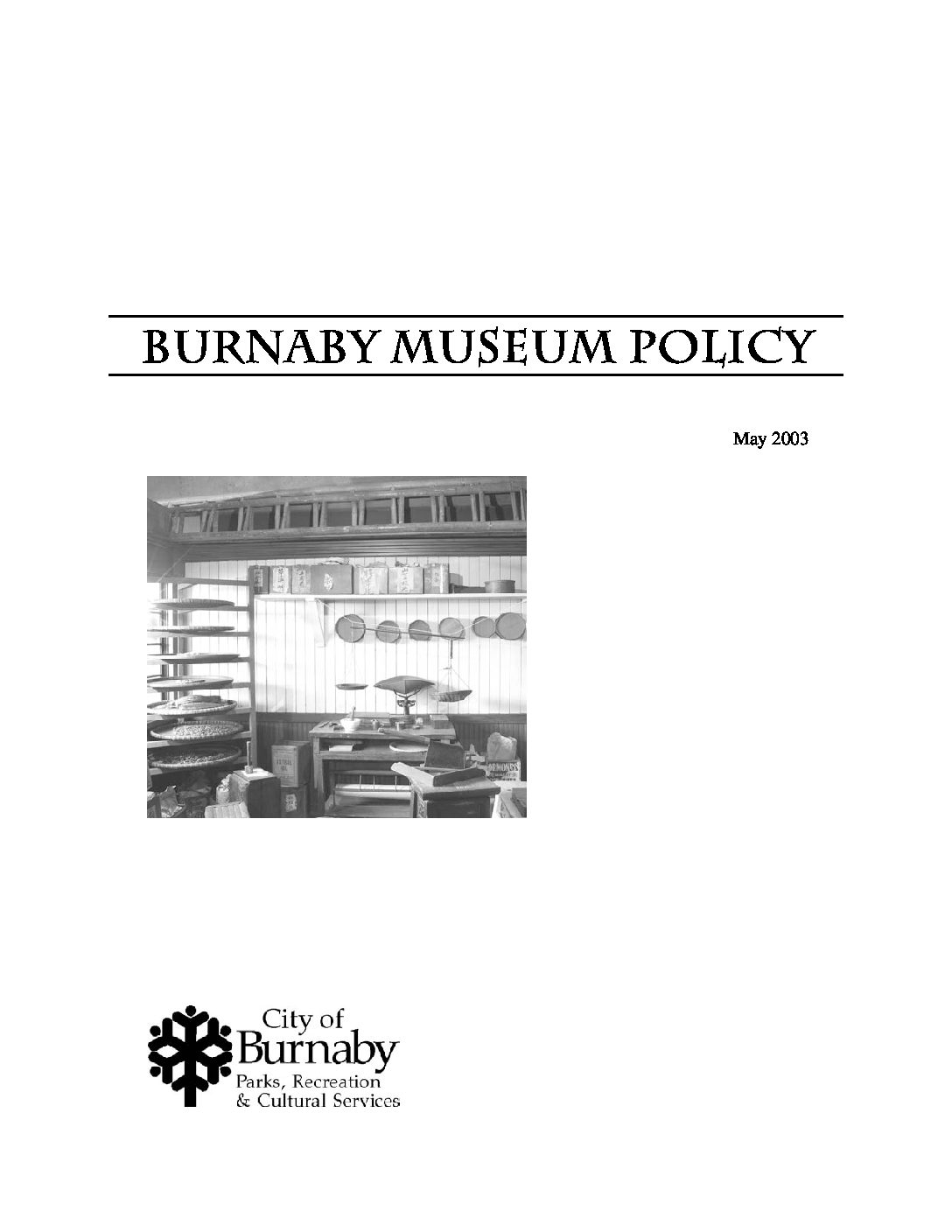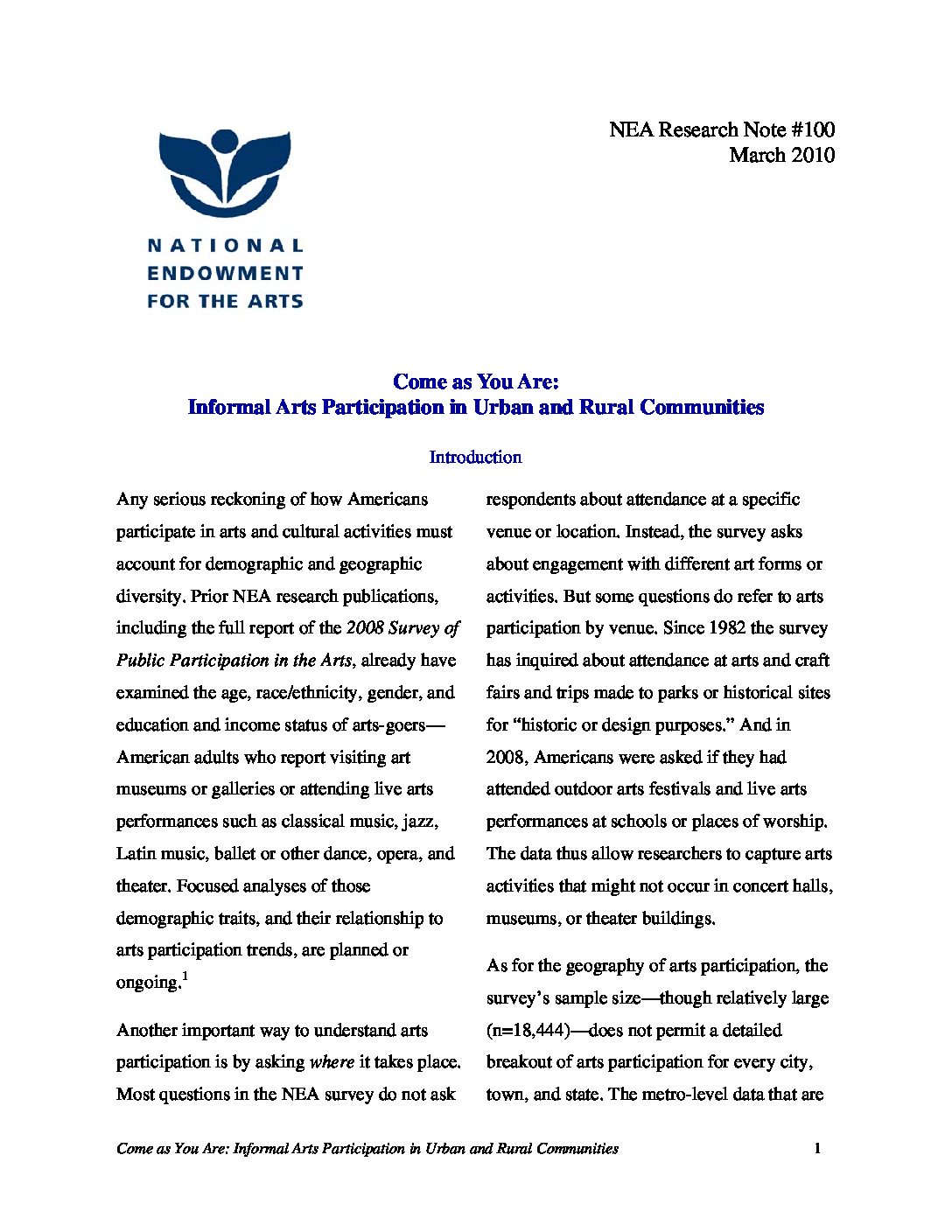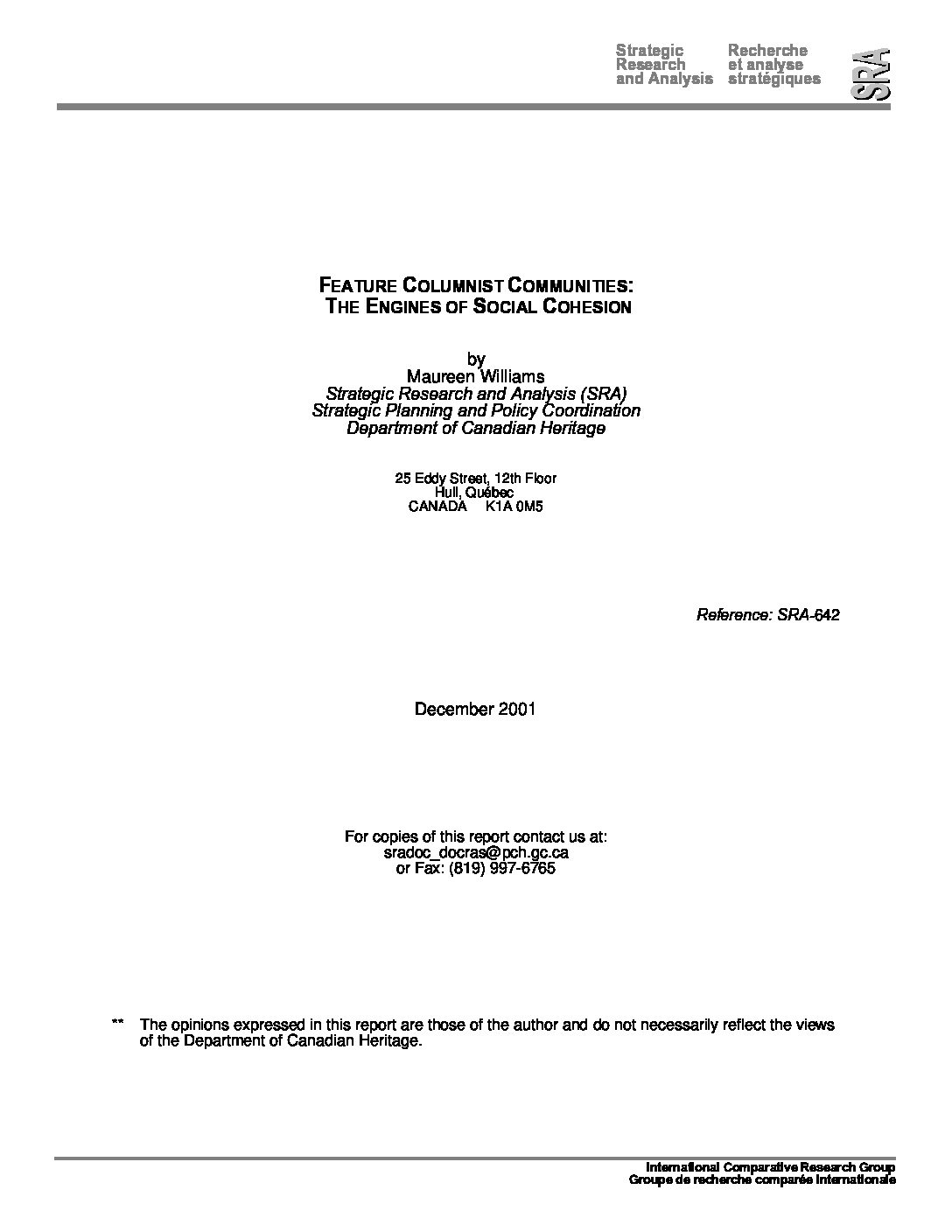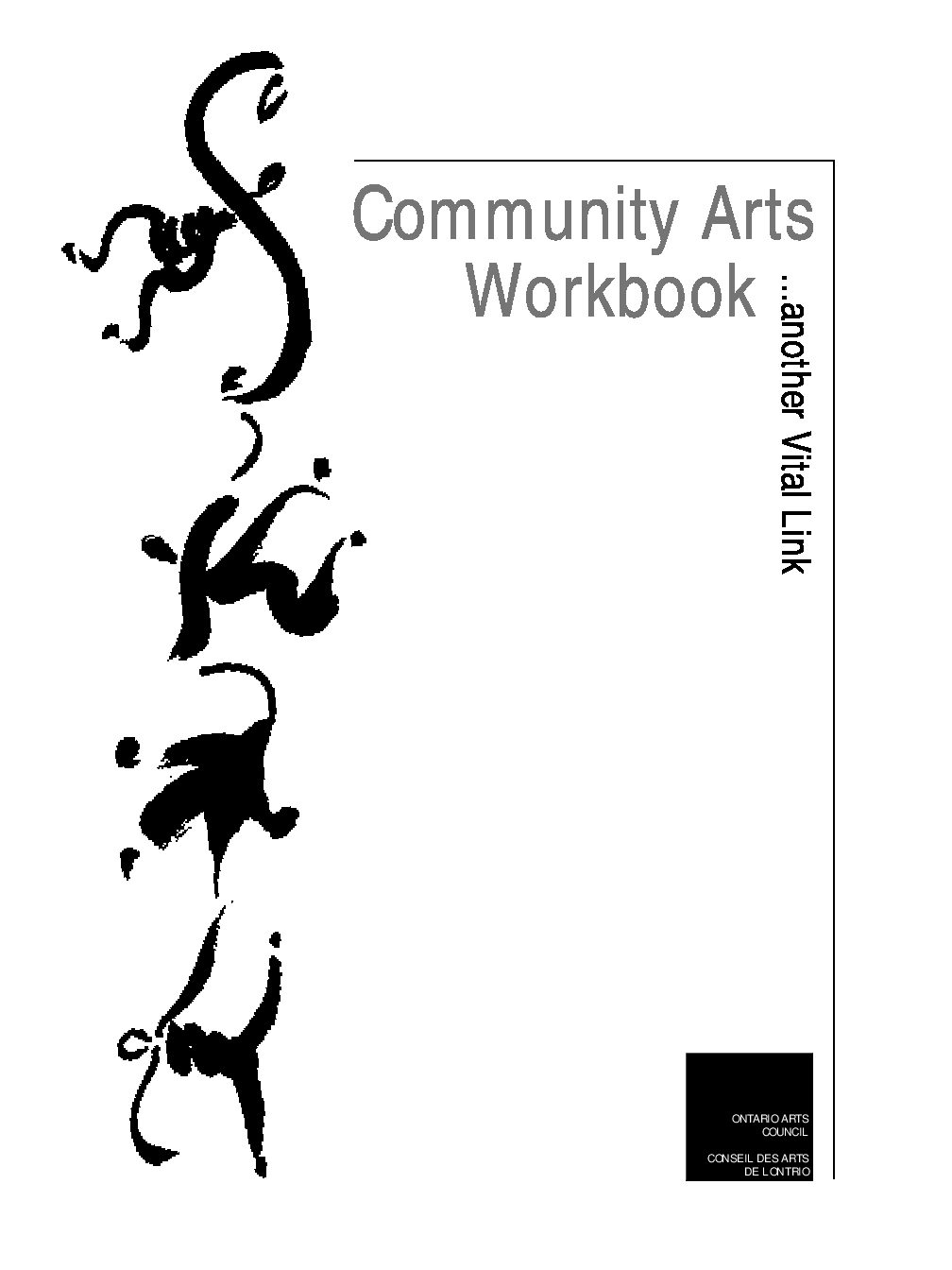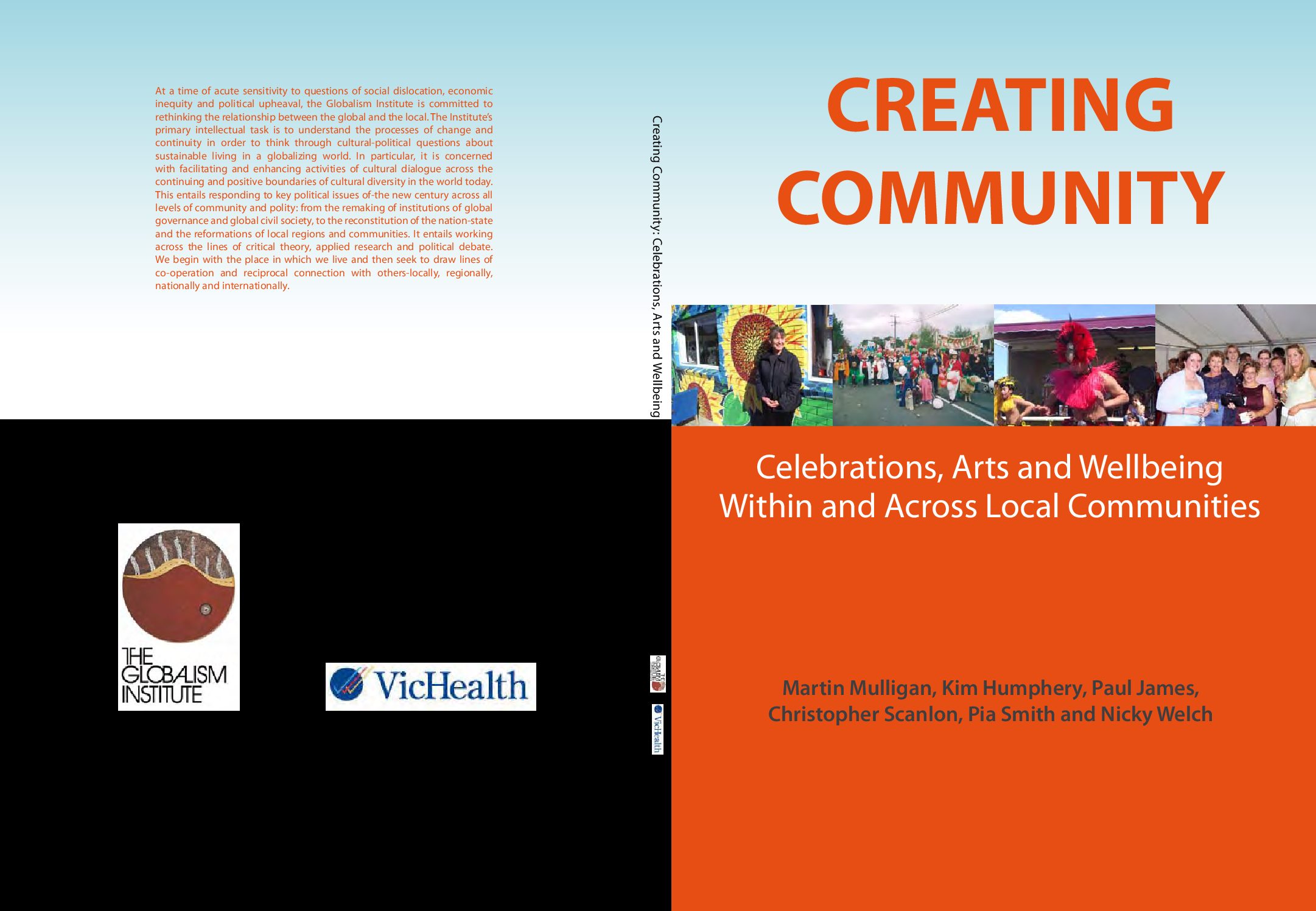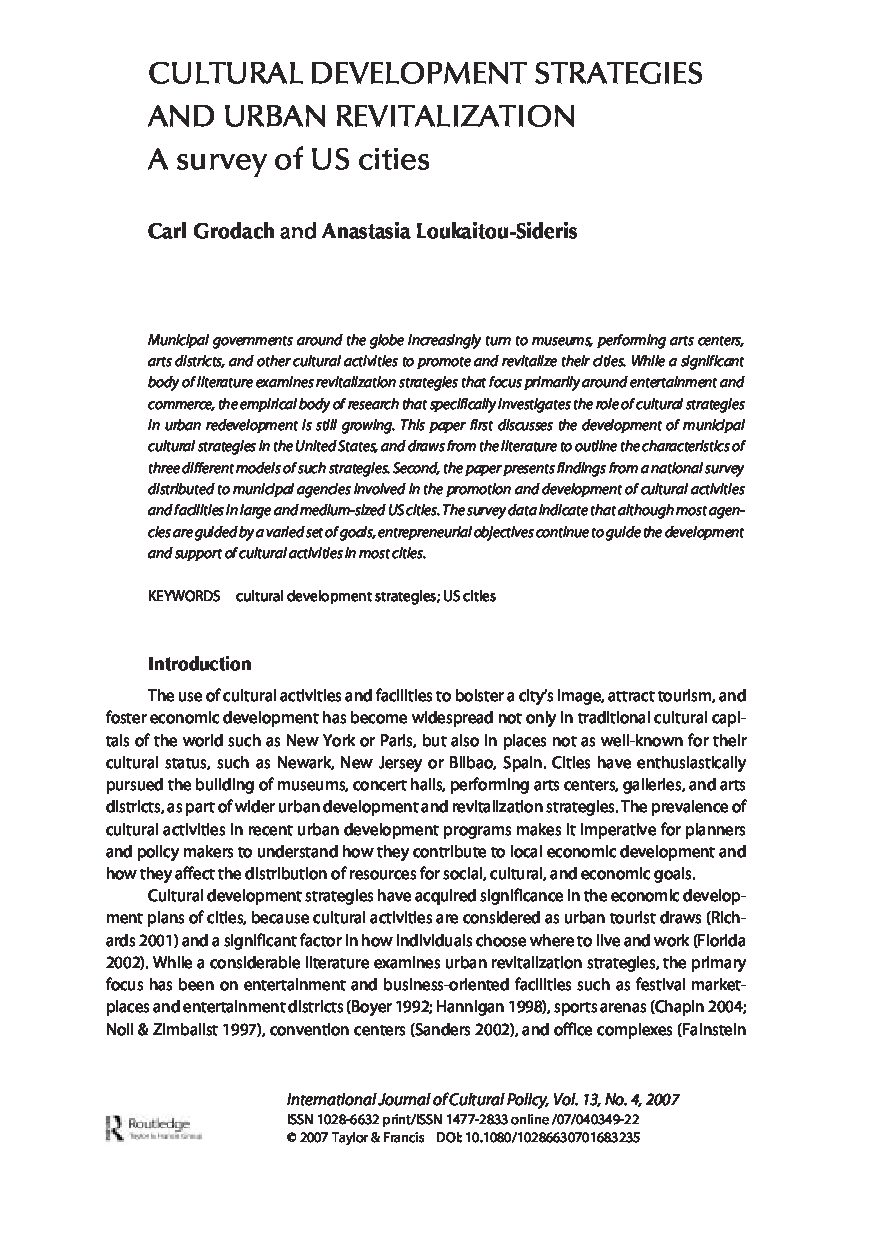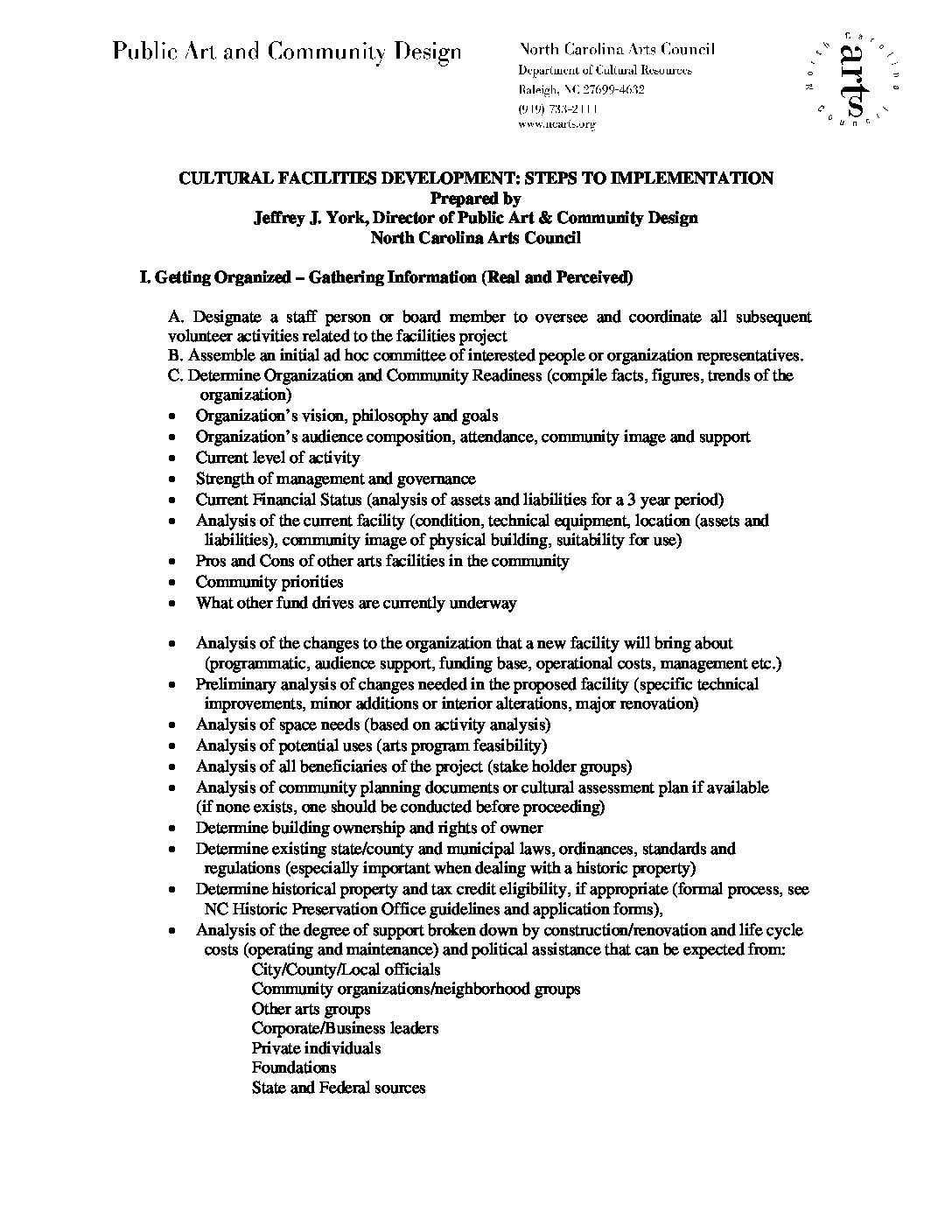-
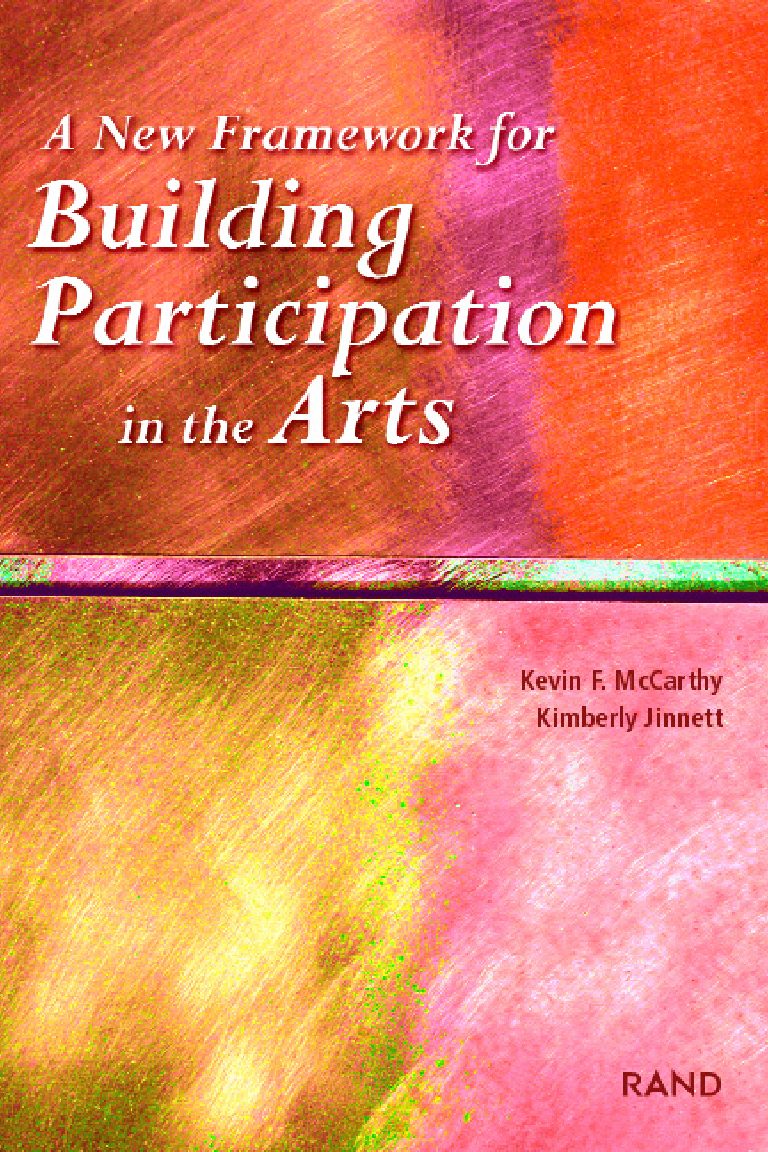
A new framework for building participation in the arts – 606KB
Arts organizations across the country are actively expanding their efforts to increase public participation in their programs. This report presents the findings of a RAND study sponsored by the Wallace-Reader’s Digest Funds that looks at the process by which individuals become involved in the arts and attempts to identify ways in which arts institutions can most effectively influence this process. The report presents a behavioural model that identifies the main factors influencing individual decisions about the arts, based on site visits to institutions that have been particularly successful in attracting participants to their programs and in-depth interviews with the directors of more than 100 institutions that have received grants from the Wallace-Reader’s Digest Funds and the Knight Foundation to encourage greater involvement in the arts.
-
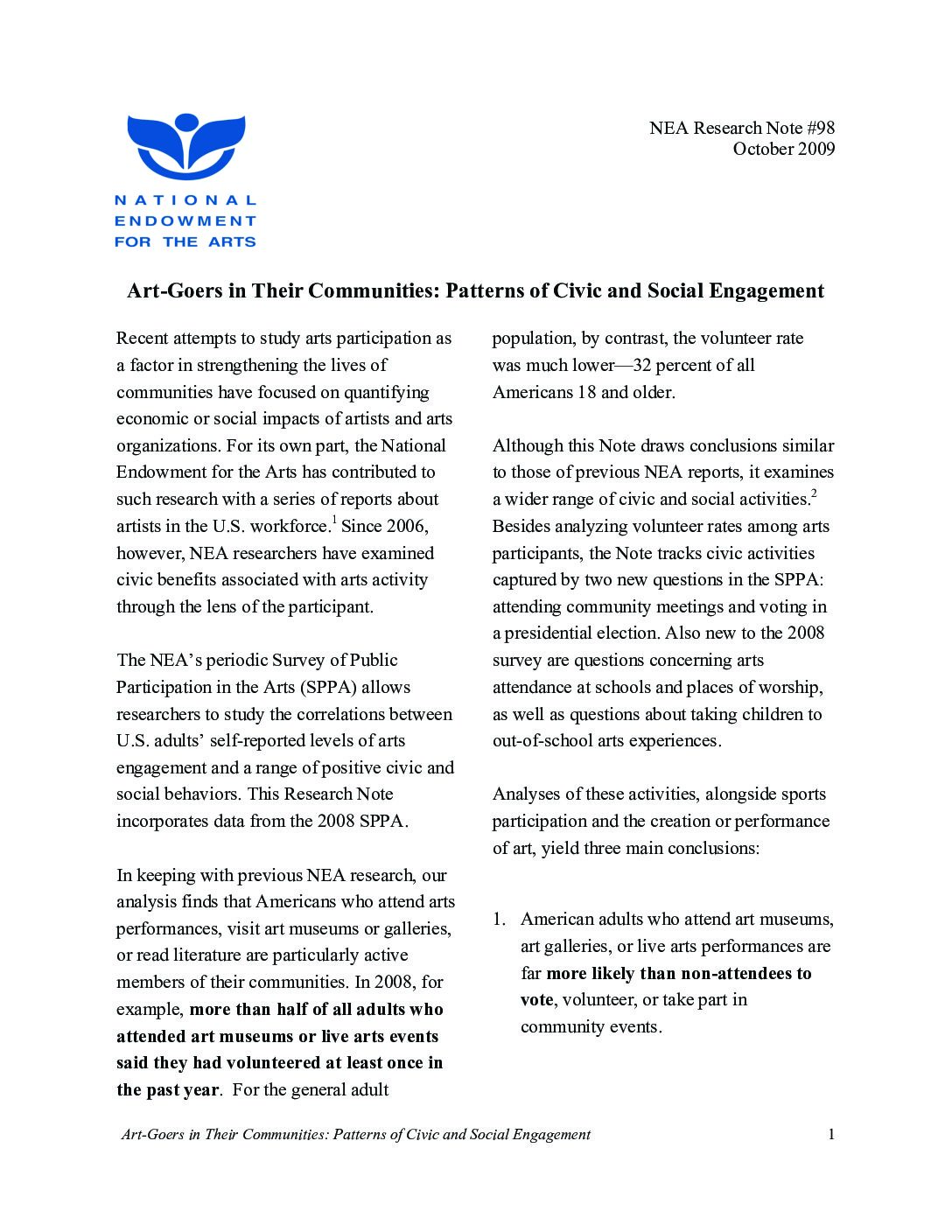
Art-Goers in Their Communities: Patterns of Civic and Social Engagement – 277KB (2009)
Recent attempts to study arts participation as a factor in strengthening the lives of communities have focused on quantifying economic or social impacts of artists and arts organizations. For its own part, the National Endowment for the Arts has contributed to such research with a series of reports about artists in the U.S. workforce.1 Since 2006, however, NEA researchers have examined civic benefits associated with arts activity through the lens of the participant.
-

Artist centers: evolution and impact on careers, neighborhoods and economies – 9399KB (2006)
Over the past generation, a unique form of dedicated space for artists has emerged in the United States. Minnesota serves as a laboratory in this study to explore the impact of artists’ centres on artists and on regions and neighbourhoods. The state and its major metro area—the Twin Cities of Minneapolis–St. Paul—host high concentrations of artists, with their ranks growing relatively rapidly over two decades. In tandem with other elements in the region, the extraordinary density and quality of artists’ centres contribute to the state’s artistic reputation.
-
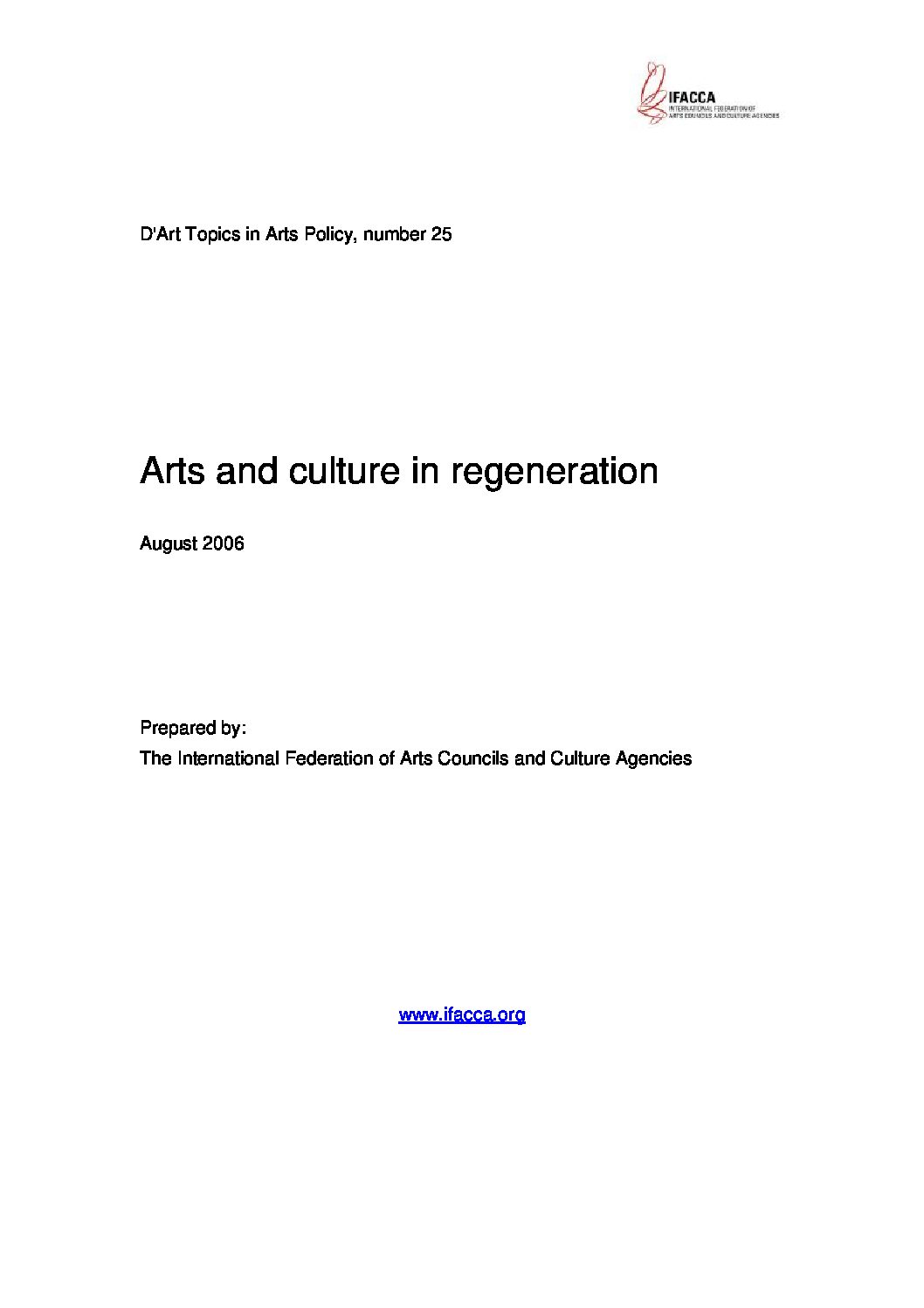
Arts and culture in regeneration – 237KB (2006)
A review of international literature related to arts and culture in regeneration, presented at the World Summit on Arts asnd Culture held in NewcatleGateshead, England, in June 2006.
-
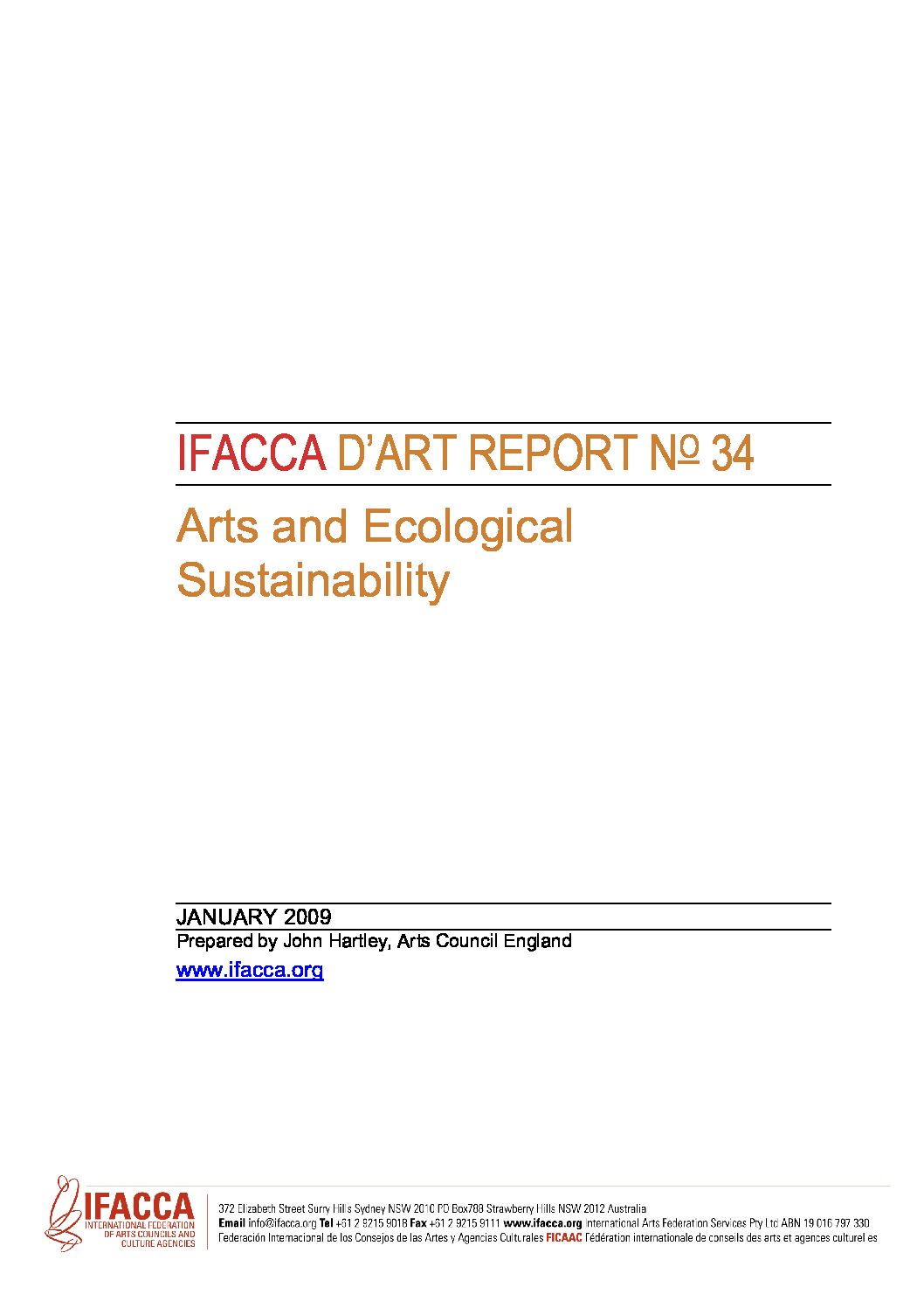
Arts and Ecological Sustainability Report – 217KB (2009)
This report provides examples of good practice in supporting artists or arts organisations with creative and practical responses to ecological concerns. The research was undertaken in collaboration with Arts Council England, which was looking to identify potential partners with whom to develop its own work in this area. This report contains a commentary and analysis of the responses to the D’art query from IFACCA’s network written by ACE’s John Hartley, and includes background and context, a full digest of responses, and links to information resources.
-
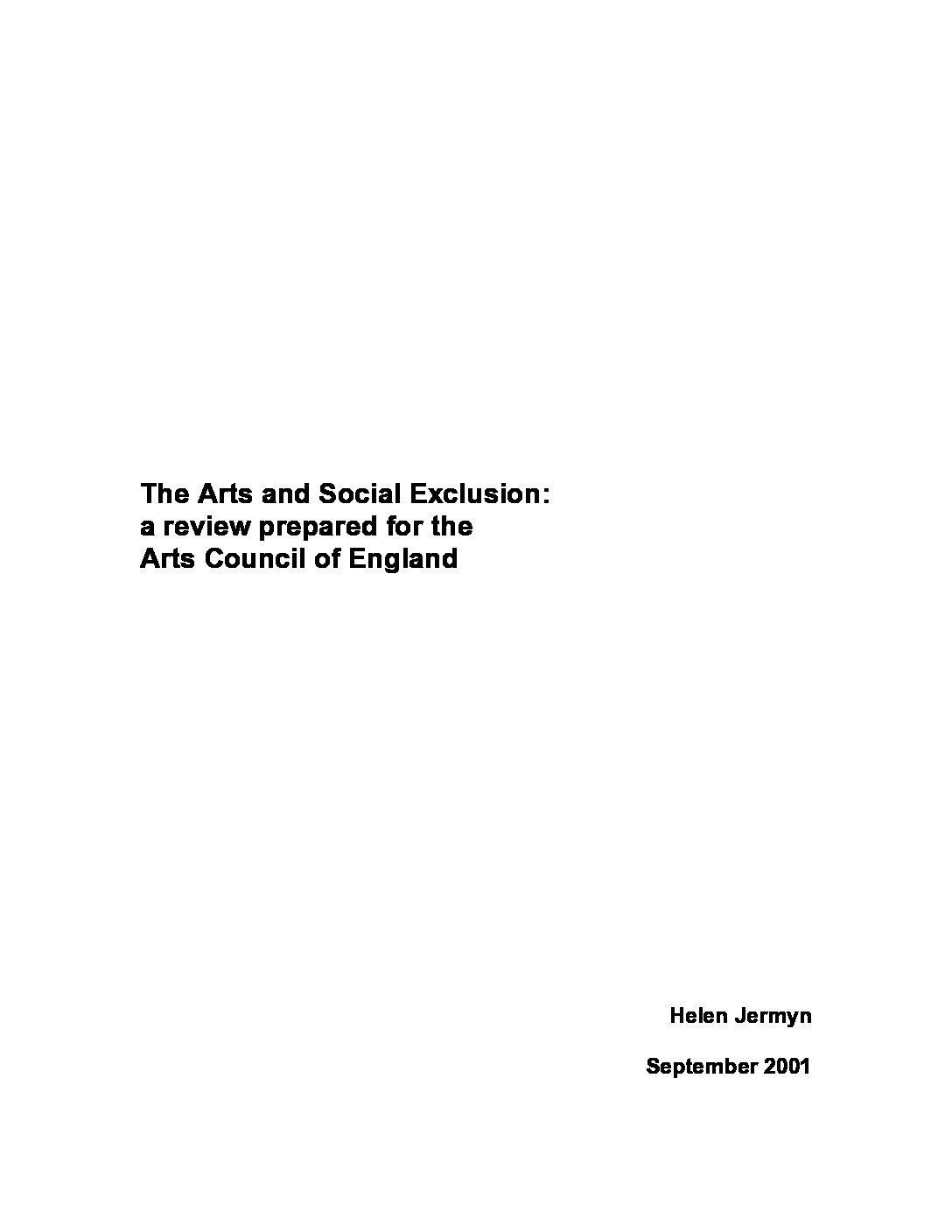
Arts and Social Exclusion – 539KB
A literature review commissioned by the Arts Council of England to support its two-year social inclusion research programme. The review explores the concept of social exclusion, and evidence of the impact of the arts in contributing to addressing social exclusion.
-

Arts Participation: steps to stronger cultural and community life – 2481KB
Summary of findings that people who participate in the arts are more likely to engage in other community activities. A brief focusing on How Arts Participation Contributes to Arts & Community; Four Ways to Participate in Arts & Culture; Arts Participation & Levels of Personal Commitment; and, Arts Participation & Community Participation.
-
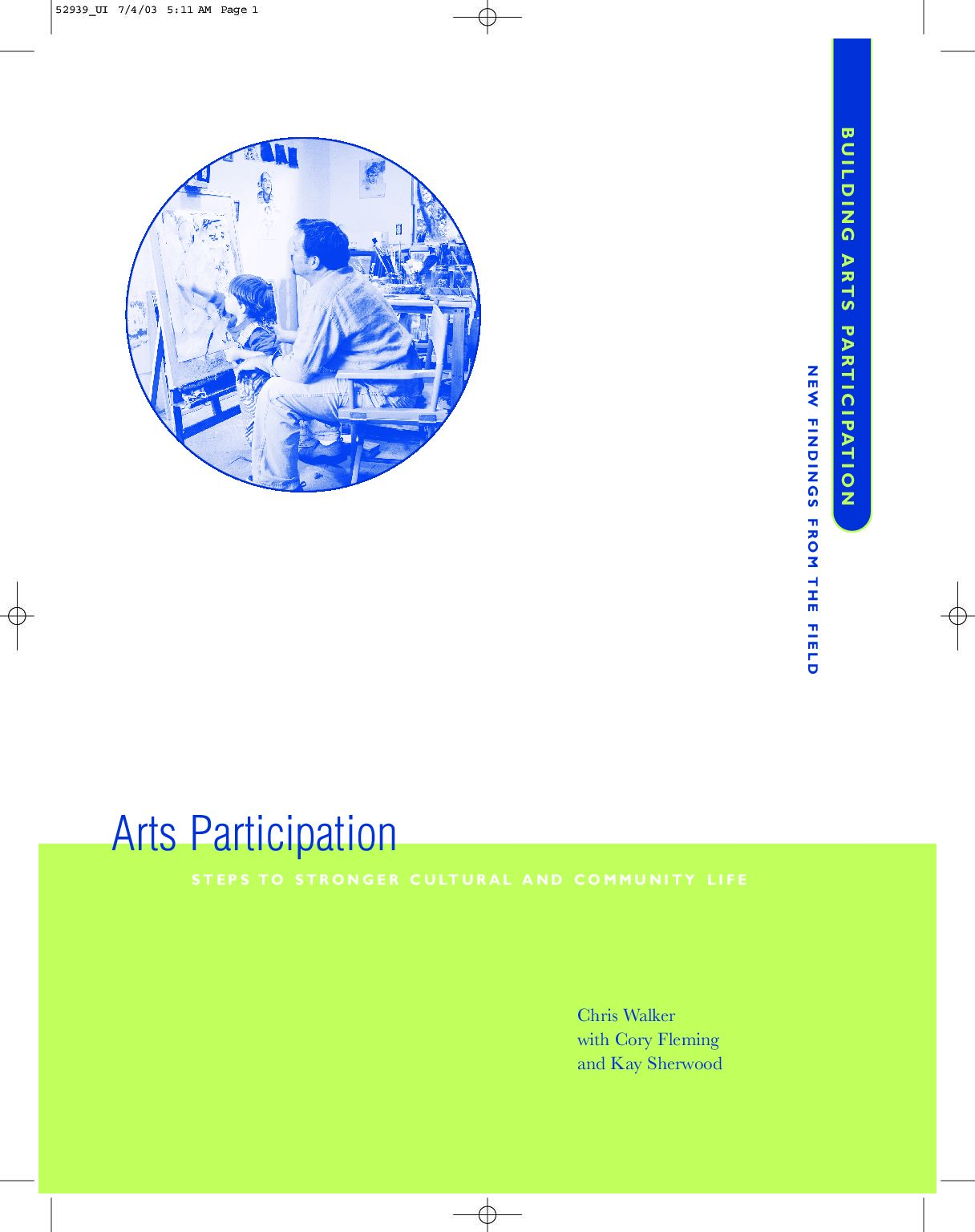
Arts Participation: Steps to Stronger Cultural and Community Life – 2481KB (2003)
A brief focusing on How Arts Participation Contributes to Arts & Community; Four Ways to Participate in Arts & Culture; Arts Participation & Levels of Personal Commitment; and, Arts Participation & Community Participation.
-
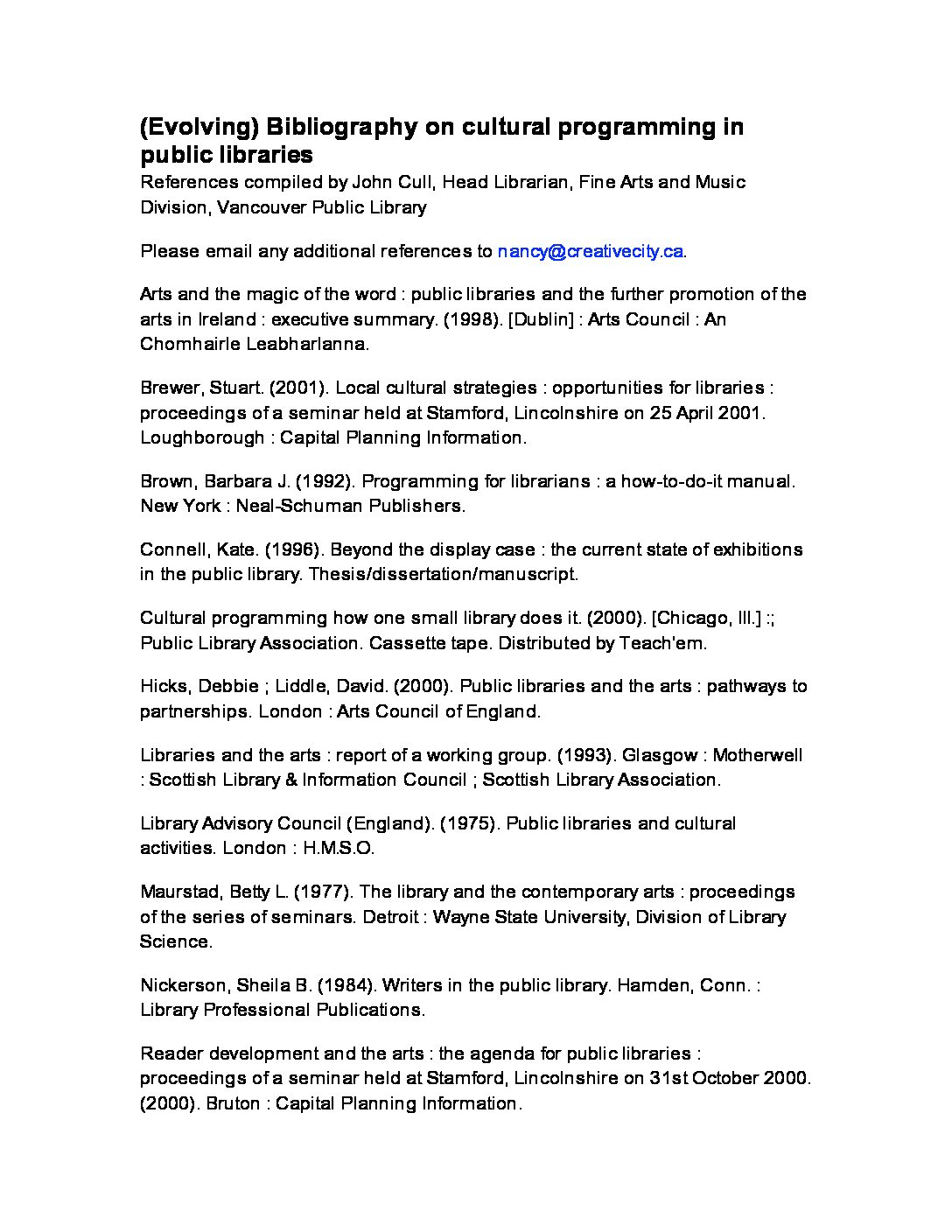
Bibliography on cultural programming in public libraries – 53KB (2005)
Cull, John (2005). References compiled by John Cull, Head Librarian, Fine Arts and Music Division, Vancouver Public Library.
N.b. This resource contains expired contact information.
-
Burnaby, BC – Museum Policy – 150KB (2003)
Museum policy adopted in May 2003 to guide planning and management.
-
Come as You Are: Informal Arts Participation in Urban and Rural Communities – 80KB (2010)
Attendance at performing arts events and art museums is greater in urbanized areas. However, urban and rural residents generally participate in the “informal arts” (activities often unaffiliated with for-profit and nonprofit arts organizations) at similar rates.
-
Communities: the engines of social cohesion – 171KB (2001)
Summary of current directions and understandings in social cohesion research.
-
Community Arts Workbook … another Vital Link – 2666KB
What is community arts? How can we view it as an artistic discipline? How has community arts emerged in Canada and in other countries? How does one start a community arts project? What are some of the challenges to working in this creative collaborative process?
-
Creating Community: Celebrations, Arts and Wellbeing Within and Across Local Communities – 1076KB (2006)
The arts and other forms of creativity can have diffuse and quite profound social outcomes in the contemporary world. They can generate a deeper sense of place that contextualizes a local sense of community.
In some cases, locally relevant projects are also able to address broader social concerns beyond local belonging or identity, such as the integration of migrants, impacts of gentrification, the restructuring of rural economies, or a fear of constant change and insecurity.
-
Cultural Development Strategies and Urban Revitalization: A survey of US cities – 117KB (2007)
Municipal governments around the globe increasingly turn to museums, performing arts centers, arts districts, and other cultural activities to promote and revitalize their cities. While a significant body of literature examines revitalization strategies that focus primarily around entertainment and commerce, the empirical body of research that specifically investigates the role of cultural strategies in urban redevelopment is still growing. This paper first discusses the development of municipal cultural strategies in the United States, and draws from the literature to outline the characteristics of three different models of such strategies. Second, the paper presents findings from a national survey distributed to municipal agencies involved in the promotion and development of cultural activities and facilities in large and medium-sized US cities. The survey data indicate that although most agencies are guided by a varied set of goals, entrepreneurial objectives continue to guide the development and support of cultural activities in most cities.
-
Cultural Facilities Development: Steps to Implementation – 55KB
Recommended steps and task list for the development of cultural facilities from a community perspective, covering both planning and implementation.

